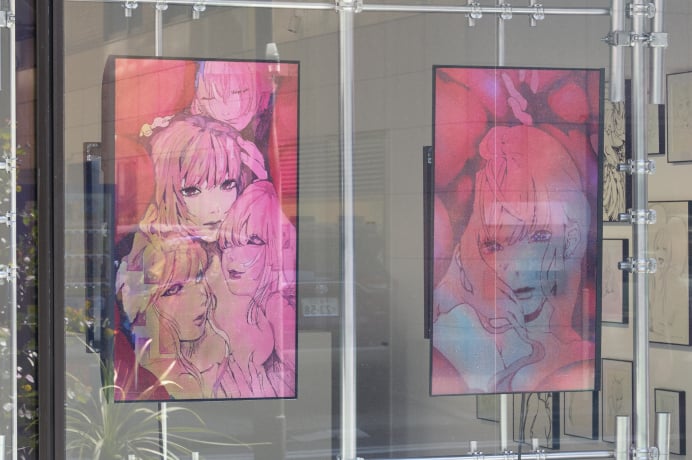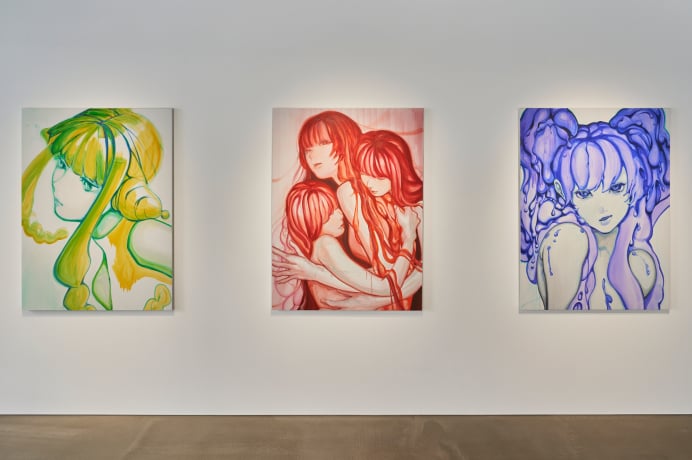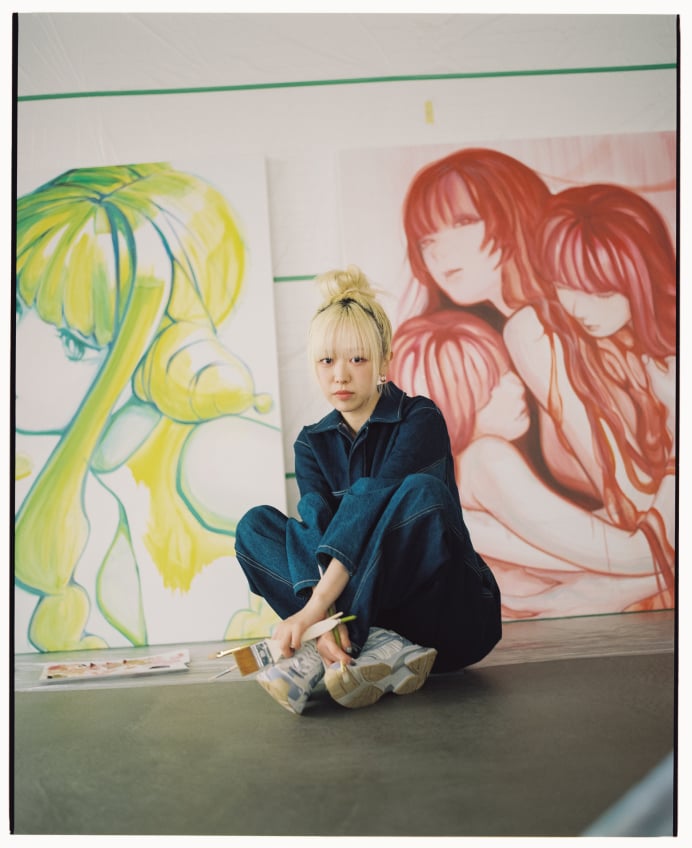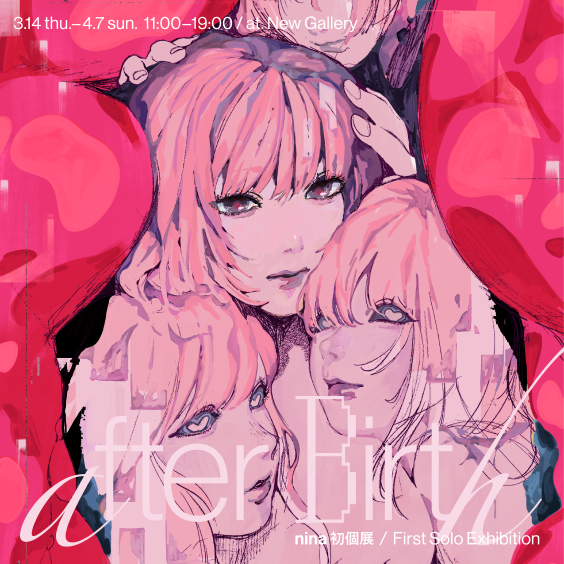Special Feature
2024.04.11
Digital is not a "lie" - an interview at nina's first solo exhibition "AfterBirth"
"AfterBirth": Physical grotesqueness with a social media filter

—Tell us about "AfterBirth" and its counterpart "stuck in place", both of which serve as key visuals.
"stuck in place" solidified early on as a key visual that would guide the preparation of the exhibition. I had it completed around January. Especially for this exhibition, I wanted to use grotesque, visceral imagery to represent the theme, so I started with an animation. Animating it brought out a sense of life and presence in the space.
"For AfterBirth", I depicted humans whose boundaries between self and others are blurred. With the proliferation of SNS, we often perceive people as massive amounts of text data, which can make one forget the reality of having a physical body.
—Hearing "blurred boundaries between self and others" sounds negative, but the actual paintings seem neither positive nor negative.
Yes, I didn’t want to lean too far in either direction. I wanted to depict modern existence beautifully. Therefore, even with visceral expressions, I opted for a slightly magenta hue rather than realistic blood colors.
—The hearts in the characters' eyes are also striking.
The hearts weren't planned from the beginning; they emerged naturally as I drew. The composition involves four girls overlapping as if melting into one, but only the girl in the center has a true sense of self. The others are more like zombies, neither alive nor dead, surrounding her. This contrast is something I wanted to emphasize with the hearts.
Oil Painting: Embracing the Texture of 'Chance'

—There are three large oil paintings displayed. I heard this was your first attempt at oil painting. Why did you decide to paint with oils?
While planning the exhibition layout, one wall was completely empty. Initially, I thought of digitally printing and then painting over it to complete the works, but I decided that if I was going to make a physical expression, it would be better to go all out with oil paints. Although it was completely new to me, I painted while learning from an oil painting artist.
—How did you find the experience?
I found it surprisingly suited to me. I’ve tried acrylic and watercolor before, but they weren’t really my forte. They dry too quickly, requiring me to have a fully formed image in my mind and paint in a planned manner, which didn’t suit me. Oil paint, however, allows for continual layering, much closer to the feeling I get when drawing.
—Can you describe how each of the three paintings was created?
The first one I painted was the red painting in the middle. It corresponds with the key visual, depicting girls huddled together, melting into one.
The next was the blue painting on the right, which is more like my usual digital work, focusing closely on a single girl.
For the first painting, I followed traditional oil painting techniques, sketching with a pencil before painting. For the second painting, I used a technique more similar to my digital work, outlining boldly from the start then filling in the areas.
The second felt more like my digital work, starting with defined shapes. The first had more of the chance overlays of paint, which felt different.
—The blue painting also features a liquid-like expression that is quite distinctive.
It’s linked to a drawing displayed called "Hedoro" featuring a girl with horns. For the painting titled "Twin Hedoro", I aimed for a look where the twin tails seem to melt and become part of the body. I wanted to maintain a slightly toxic atmosphere, so I was mindful of how the paint dripped.
—What about the yellow painting on the left?
This was the third painting I worked on, keeping the other two in mind. Since the girl in the second painting looks directly at the viewer, I positioned this girl with a slightly averted gaze. By this time, I had gotten the hang of oil painting, understanding how to layer and mix paints. The areas where I layered yellow and green were where I consciously employed an oil-like expression.
—Do you feel a difference between your digital and oil paintings?
They are quite different. Paint dripping and colors mixing create unintended spontaneous expressions that naturally occur with oils. But I’ve come to love these imperfections. With digital, I tend to chase perfection, but with oils, I realized I could play more freely.
—Will you continue with oil painting?
Yes, I really like the presence that physical paintings have, so I want to try even larger paintings next.











